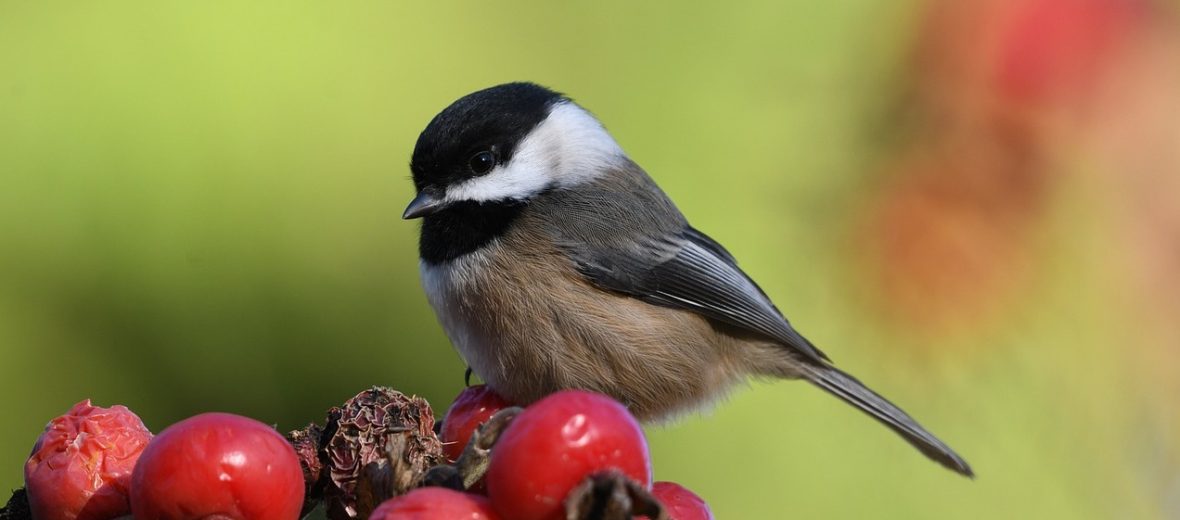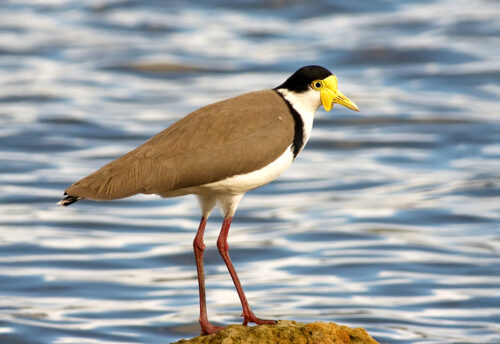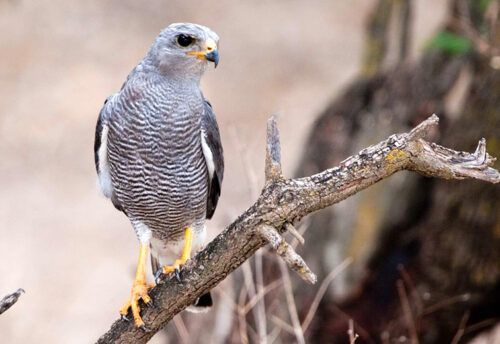
The black-capped chickadee can be found from Alaska, down throughout Canada, and into the northern parts of the United States. These birds prefer cottonwood groves, deciduous woodlands, parks, open woods, and willow thickets. They also frequent backyard bird feeders. They only migrate when food is hard to come by and this is just a short migration, at that. Due to their wide spread distribution and increasing numbers, these small birds are listed as Least Concern by the IUCN.
First the Stats…
Scientific name: Poecile atricapillus
Weight: Up to .5 ounce
Length: Up to 6 inches
Wingspan: Up to 8 inches
Lifespan: Up to 12.5 years
Now on to the Facts!
1.) Gathering into small flocks, these birds can be seen hovering, gleaning, and even foraging upside down.
2.) The general hierarchy consists of the male, then the female, then the old, followed by the young.
3.) A group of chickadees is called a banditry or dissimulation.
4.) Chickadees are diurnal (active during the day).
5.) In winter, these chickadees can be seen with other flocks of birds, like warblers, nuthatches, woodpeckers, and more.
But wait, there’s more on the black-capped chickadee!
6.) Primarily carnivorous, these birds will eat insects, spiders, caterpillars, and snails. During winter, they feast on berries and seeds.
7.) The black-capped chickadee is monogamous (mates for life) and will bond with the same partner for many years.
Did you know…?
A cool adaptation to changing social flocks and alterations in their environment, these chickadees allow brain cells with old information to die off in the autumn, then replace them with new brain cells.
8.) Once a territory is established and assuming food sources remain, the pair will stay in the same general area for most, if not all, of their lives.
9.) Wing-shivering, quiet calls, and food offerings to the female make up their courtship.
10.) Breeding season lasts from April – August.
But wait, there’s still more on the black-capped chickadee!
11.) They typically build a small, cup-shaped nest in cavities. Otherwise, they will nest in woodpecker holes or nest boxes.
Did you know…?
Many birds that join chickadee flocks will listen to the alarm calls of the chickadees and respond accordingly.
12.) The female will lay up to 8 eggs and she is the only 1 who incubates said eggs.
13.) Eggs hatch in up to just 13 days.
14.) The chicks are independent in up to 6 weeks.
15.) Hawks, owls, and shrikes all prey on adult chickadees, while raccoons steal and eat their eggs.
Now a Short Black-Capped Chickadee Video!
Be sure to share & comment below! Also, check out the Critter Science YouTube channel. Videos added regularly!
Want to suggest a critter for me to write about? Let me know here.
Think you know a lot about critters? Try your hand at these fun, free quizzes:



